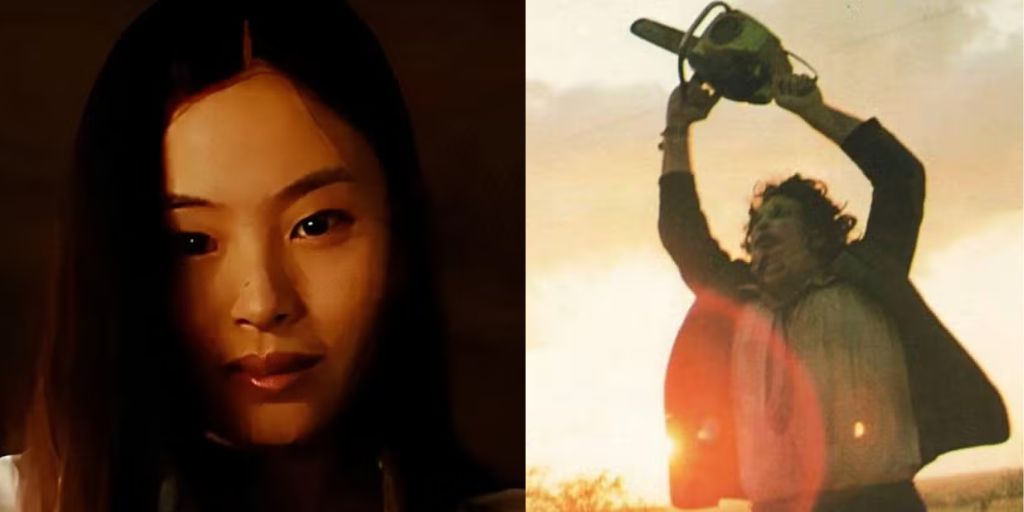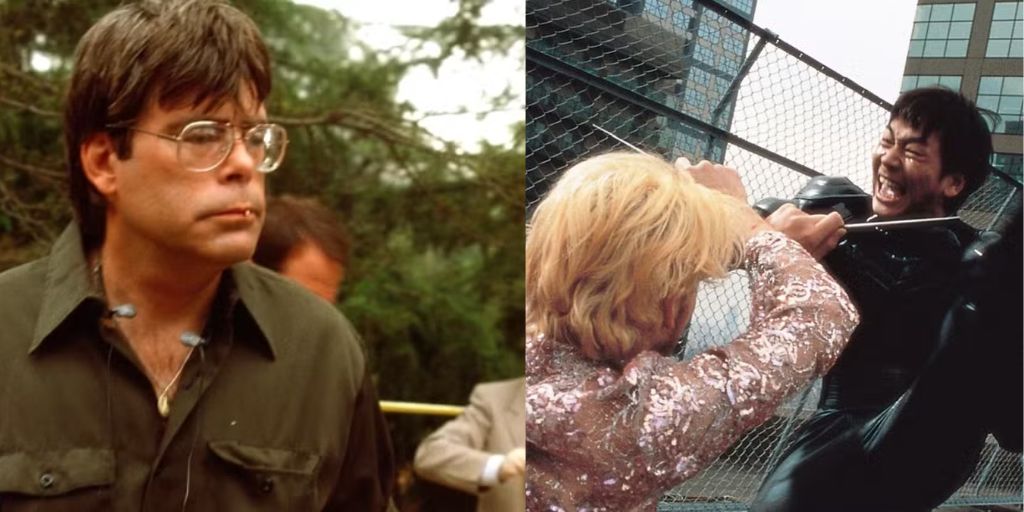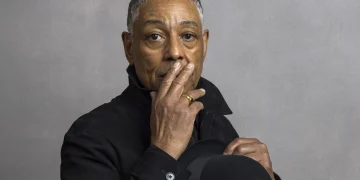October 11, 2024, marks the 50th anniversary of Tobe Hooper’s groundbreaking horror film The Texas Chain Saw Massacre, a movie that forever changed the way audiences experience terror on the big screen.
Released in 1974, it offered a raw, disturbing vision of horror that didn’t rely on excessive gore but instead created an atmosphere of dread through its gritty cinematography, eerie sound design, and chilling performances.
The film introduced one of horror’s most iconic villains, Leatherface, played by Gunnar Hansen, and spawned a franchise that continues to this day. With nine entries in total, none have quite lived up to the groundbreaking original, but all of them owe their existence to the brutal genius of Hooper’s first installment.
Despite its low budget and minimal special effects, The Texas Chain Saw Massacre has become one of the most influential horror films in cinema history. The closing scene, with Leatherface frantically waving his chainsaw against the backdrop of a burnt-orange sunrise, is one of the most iconic moments in movie history.
Another unforgettable shot is Pam (played by Teri McMinn) walking toward the Sawyer house, completely unaware of the horror awaiting her inside. These images, along with the film’s masterful storytelling and eerie atmosphere, helped solidify The Texas Chain Saw Massacre as a horror masterpiece.
As the years have passed, the movie’s influence has only grown, inspiring generations of filmmakers and leaving a lasting mark on the horror genre. To show this influence, Swiss director Alexandre O.
Philippe has created Chain Reactions, a documentary that examines not the making of The Texas Chain Saw Massacre but the lasting legacy it has left on cinema as a whole. Through interviews with filmmakers, actors, and critics, Chain Reactions goes into how Hooper’s masterpiece shaped the horror view and why it continues to resonate with audiences 50 years later.
Patton Oswalt: A True Superfan of The Texas Chain Saw Massacre
One of the most engaging parts of Chain Reactions is its interview with comedian and actor Patton Oswalt. While Oswalt may not be a filmmaker or a film historian, his passion for The Texas Chain Saw Massacre shines through in every moment of his segment. Oswalt, who has long been a vocal fan of the movie, provides a unique perspective as a superfan who deeply understands the nuances of horror cinema.
The documentary begins with a clip from one of Oswalt’s ‘90s stand-up performances, in which he declares that The Texas Chain Saw Massacre has the best movie title of all time. He argues that the title alone creates an entire movie in the mind of the audience before they even see a single frame.

The sheer brutality of the words “chain saw massacre” leaves nothing to the imagination, setting the stage for the carnage to come. Oswalt’s excitement for the movie is palpable, and his interview serves as the perfect introduction to the documentary, establishing a tone of passionate reverence for Hooper’s work.
Oswalt recalls his first experience with horror films, describing how he watched Nosferatu at a young age and was terrified by its haunting imagery. That early experience left a lasting impression on him, igniting a lifelong love of the horror genre.
His admiration for The Texas Chain Saw Massacre runs deep, and he praises Hooper’s ability to create a film that is both terrifying and artistically profound.
Oswalt’s segment captures the pure joy of being a fan, and his enthusiasm is infectious. Even those who may not typically enjoy horror films will appreciate Oswalt’s sincere love for the genre and his admiration for the artistry behind it.
Oswalt’s excitement extends beyond just the surface-level thrills of the movie. He articulates the deeper meaning behind even the smallest details, like the unsettling sound of the generator in the background or the unnerving quiet that fills certain scenes.
His analysis of The Texas Chain Saw Massacre highlights the subtle techniques Hooper used to create an atmosphere of fear, proving that the film’s power lies not just in its brutality but also in its careful craftsmanship.
Takashi Miike: A Filmmaker Influenced by Leatherface
After Oswalt’s exuberant praise, the documentary shifts to Japanese filmmaker Takashi Miike, whose works are renowned for their extreme depictions of violence.
Miike recounts his first experience with The Texas Chain Saw Massacre, explaining how he went to see it by accident when the movie he intended to watch, Charlie Chaplin’s City Lights, was sold out. What started as a mistake became a pivotal moment in Miike’s career, shaping the way he approached violence and horror in his own films.
Miike’s body of work, which includes such films as Audition and Ichi the Killer, shares many thematic and stylistic similarities with The Texas Chain Saw Massacre. Both directors use violence not as a gratuitous spectacle but as a means of showing deeper psychological and societal fears.
Chain Reactions expertly intercuts scenes from Miike’s films with moments from The Texas Chain Saw Massacre, demonstrating how Hooper’s portrayal of bodily harm influenced Miike’s own approach to violence in cinema.
Miike also provides a valuable outsider’s perspective, comparing the cultural differences between American and Japanese horror.
While both countries have their own unique styles of horror, The Texas Chain Saw Massacre proved to be universally influential. Miike explains how Hooper’s film transcends cultural boundaries, showing that the fear of violence and the unknown is a universal human experience.
One particularly insightful observation Miike makes is the way Hooper portrays violence as something random and chaotic, rather than as something that can be easily explained or understood.
In many ways, this reflects the chaotic nature of Leatherface himself, who isn’t driven by a coherent motive but rather by a primal urge to kill. Miike’s analysis adds depth to the understanding of Hooper’s work, illustrating how The Texas Chain Saw Massacre tapped into something primal and terrifying in its portrayal of violence.
Alexandra Heller Nicholas: A Visual and Cultural Analysis
Australian film critic Alexandra Heller Nicholas offers a refreshing perspective on The Texas Chain Saw Massacre, focusing on the film’s visual language and its cultural impact.
As the first woman to be interviewed in the documentary, Nicholas brings a much-needed female perspective to the conversation, analyzing the way the film portrays gender and violence. Her insights go beyond the surface-level horror elements, going into the deeper themes that run through the film.
Nicholas examines the use of color in The Texas Chain Saw Massacre, specifically the dominant yellows and reds that appear throughout the film. These colors, she argues, are not just aesthetic choices but also serve to heighten the film’s sense of unease and impending doom.
Nicholas compares these visual elements to those found in Australian cinema of the 1970s, noting how both American and Australian filmmakers used color to convey psychological and emotional tension.
Nicholas also discusses how different formats of the film, such as VHS tapes or television broadcasts, can drastically alter the viewing experience. She explains that the grainy quality of VHS copies actually enhances the film’s gritty, documentary-like feel, making the violence and horror feel more immediate and real.
On the other hand, watching the film in high definition on a modern TV can sometimes distance the viewer from the raw intensity of the original experience. This analysis underscores how important the medium can be in shaping a film’s impact on its audience.

Nicholas’s segment is particularly valuable because it moves the conversation beyond just Leatherface and his iconic chainsaw.
While the film’s violence is certainly a key part of its legacy, Nicholas’s visual and cultural analysis shows that The Texas Chain Saw Massacre is also a deeply complex work of art that uses every element of filmmaking—from color to sound to editing—to create a visceral emotional response.
Stephen King: The Master of Horror Weighs In
When it comes to horror, few names are as iconic as Stephen King, and his inclusion in Chain Reactions adds an extra layer of credibility to the documentary.
However, while King’s insights are interesting, his interview lacks the focus and cohesion of the others. King’s conversation jumps between topics, moving from his thoughts on The Texas Chain Saw Massacre to his personal experiences with Tobe Hooper to tangents about The Evil Dead.
Despite this lack of structure, King’s segment is still valuable because it offers a view into the mind of one of horror’s greatest writers. His deep understanding of the genre allows him to articulate why The Texas Chain Saw Massacre is so effective at terrifying audiences.
He explains that the film’s power lies not just in its violence but in its ability to tap into deep, primal fears. King’s observations about how horror movies can terrify us by making the familiar seem strange and dangerous are particularly insightful, and they help to contextualize the lasting appeal of The Texas Chain Saw Massacre.
However, King’s segment would have benefitted from a tighter focus. While his thoughts on The Evil Dead and other horror films are interesting, they detract from the main subject of the documentary.
An interview with someone like Robert Englund (Freddy Krueger) or another horror icon might have been more relevant, providing a clearer connection to The Texas Chain Saw Massacre.
Karyn Kusama: Analyzing the American Roots of The Texas Chain Saw Massacre
The final interviewee in Chain Reactions is horror filmmaker Karyn Kusama, known for films like The Invitation and Jennifer’s Body. Kusama’s segment brings a modern perspective to the discussion, analyzing how The Texas Chain Saw Massacre reflects American fears and societal issues.
According to Kusama, Hooper’s portrayal of the Sawyer family serves as a microcosm of larger societal anxieties surrounding masculinity, violence, and the breakdown of the traditional American family.
Kusama argues that the film’s characters are not simply monstrous; they are a reflection of a deeper psychological and societal breakdown.
The Sawyers are a family in chaos, and their dysfunction echoes the anxieties of a nation grappling with the loss of traditional values. This theme is especially relevant today, as contemporary society continues to grapple with issues of violence, identity, and family dynamics.
Kusama’s analysis of The Texas Chain Saw Massacre serves as a bridge between the film’s impact in the 1970s and its relevance in today’s cultural view. She highlights how the fears presented in the film are not merely relics of the past but are still very much alive in modern society.
This connection makes the documentary feel timely and important, as it encourages viewers to reflect on how the themes of The Texas Chain Saw Massacre resonate with ongoing conversations about masculinity and violence in contemporary culture.
The Lasting Impact of Chain Reactions
Chain Reactions is more than just a documentary about The Texas Chain Saw Massacre; it is a tribute to the lasting impact of Hooper’s film on the horror genre and cinema as a whole.
By focusing on the ripple effects created by The Texas Chain Saw Massacre, the documentary highlights how the film has influenced a diverse range of filmmakers, actors, and critics.
Rather than relying on archival footage or behind-the-scenes interviews, Chain Reactions allows its participants to share their personal memories and insights, proving that anyone can have a meaningful opinion on a film, regardless of their background or profession.
The documentary emphasizes the cultural significance of The Texas Chain Saw Massacre and how it continues to shape the horror genre today. By showing the personal connections filmmakers have to the film, Chain Reactions successfully conveys the deep love and admiration many hold for Hooper’s work.
This is evident in Oswalt’s enthusiastic praise, Miike’s reflections on violence, Nicholas’s visual analysis, King’s insights into horror, and Kusama’s modern interpretation of the film’s themes. Each interview adds a unique layer to the documentary, creating a comprehensive scheme of the film’s legacy.
The Power of the Original Film
While Chain Reactions is an insightful look at the impact of The Texas Chain Saw Massacre, it does miss some key aspects of the film’s original success. The documentary doesn’t goes deeply into the challenging production process or the contributions of the cast and crew.
For instance, Gunnar Hansen’s portrayal of Leatherface could have been shown in greater detail, highlighting how his performance influenced future generations of horror actors.
Hansen’s role as Leatherface is important to understanding the film’s impact. His embodiment of the character added layers of complexity that have since shaped how audiences perceive horror villains.

A deeper examination of Hansen’s approach to the character, as well as his working relationship with Hooper, could have enriched the documentary’s scheme of the film’s legacy.
Additionally, while Chain Reactions offers fascinating insights into how The Texas Chain Saw Massacre continues to inspire filmmakers, it could have benefited from a discussion of how the film’s themes resonate with contemporary issues, such as the portrayal of violence in media and societal anxieties surrounding masculinity and identity.
Conclusion: A Masterpiece That Redefined Horror
Despite these missed opportunities, Chain Reactions is a powerful reflection on the enduring legacy of The Texas Chain Saw Massacre. Tobe Hooper’s groundbreaking film, made on a shoestring budget, has become one of the most iconic horror movies in history. It has shaped the view of the genre, influencing countless filmmakers and audiences alike.
As we celebrate 50 years of The Texas Chainsaw Massacre, it’s clear that its impact is far-reaching and profound. From Oswalt’s exuberant love for the film to Kusama’s modern analysis of its themes, Chain Reactions captures the essence of what makes Hooper’s work so enduringly relevant.
The film remains a touchstone for horror lovers and filmmakers, a reminder of the power of storytelling and the ability of cinema to show the darkest corners of human existence.
In a place that continues to grapple with violence, fear, and identity, The Texas Chain Saw Massacre stands as a timeless classic—a film that not only defined a genre but also pushed the boundaries of what horror can achieve.
The documentary Chain Reactions serves as a fitting tribute to a film that will continue to haunt and inspire for generations to come.





